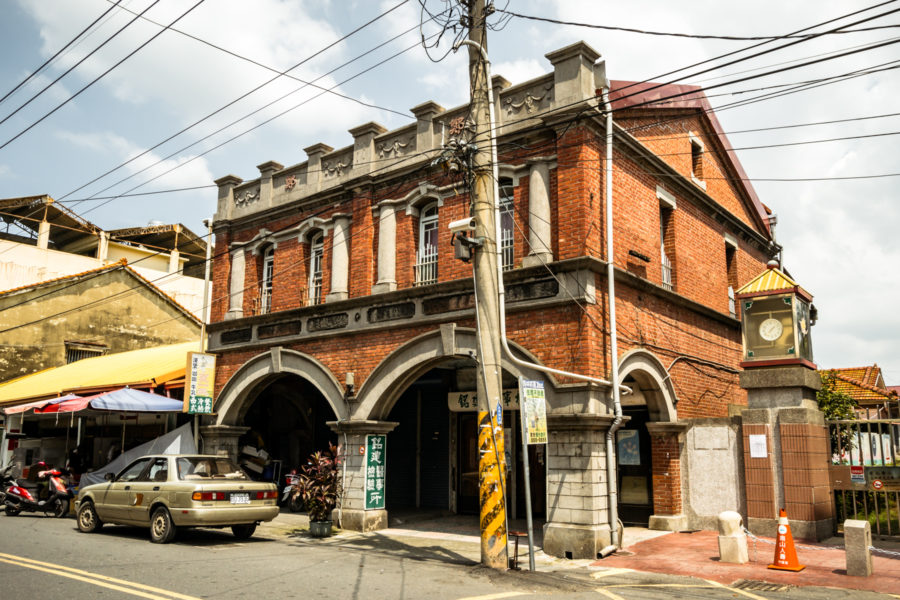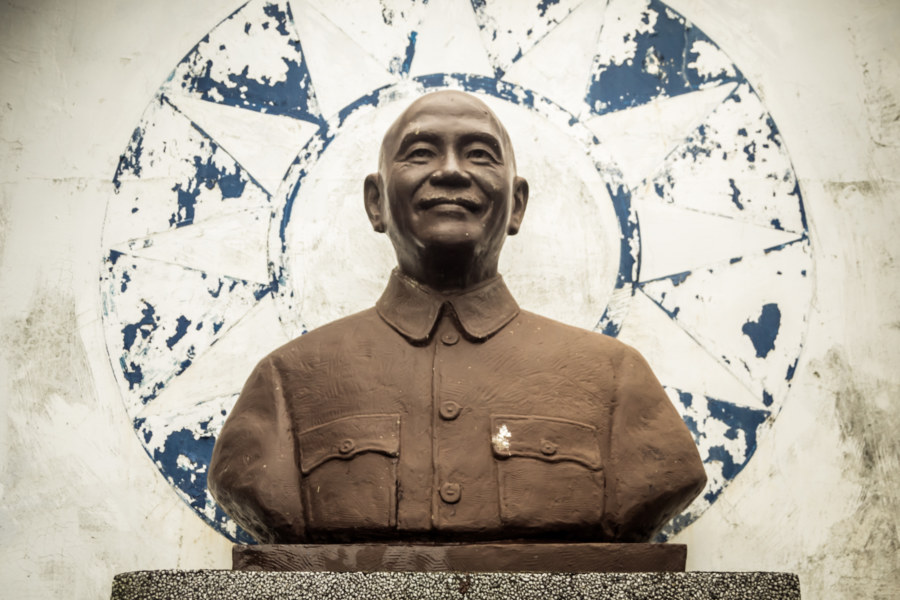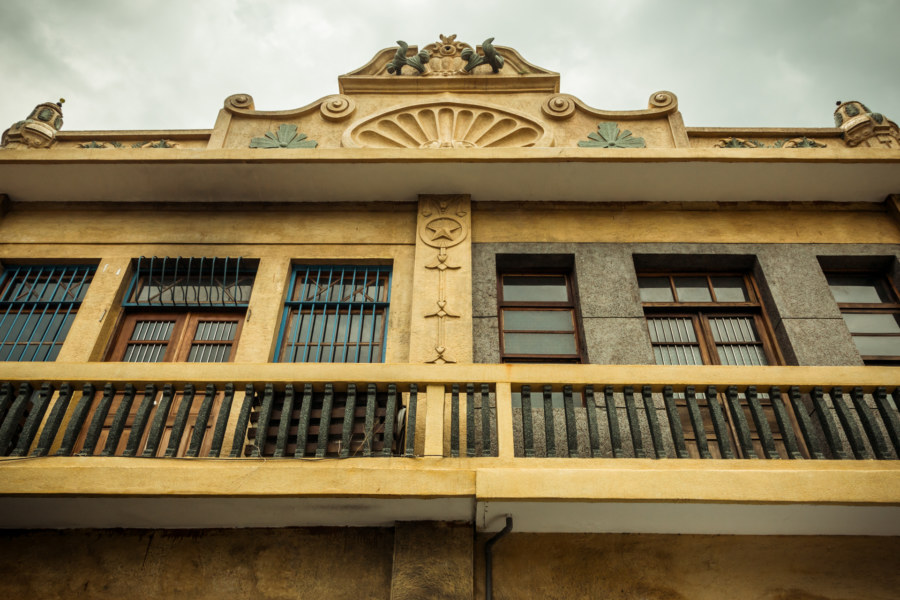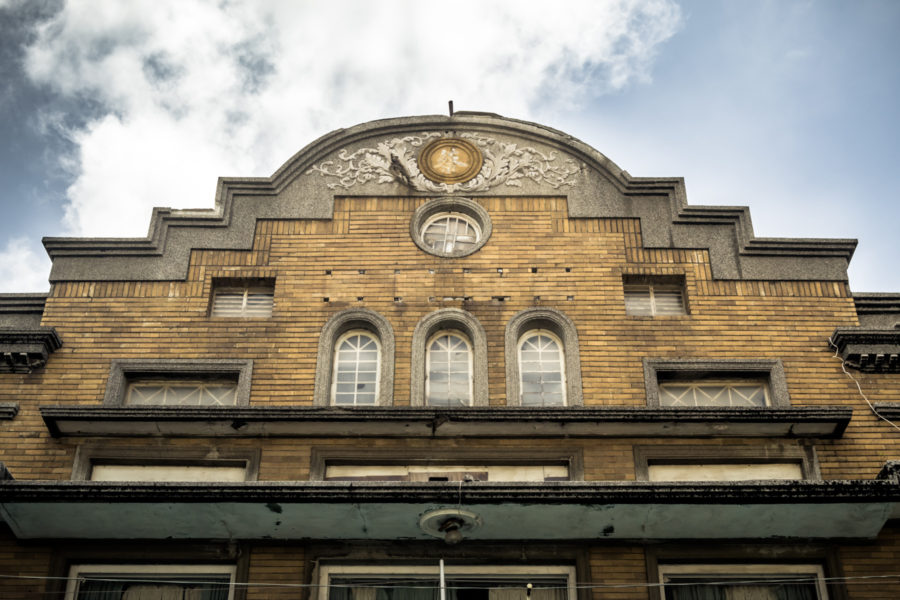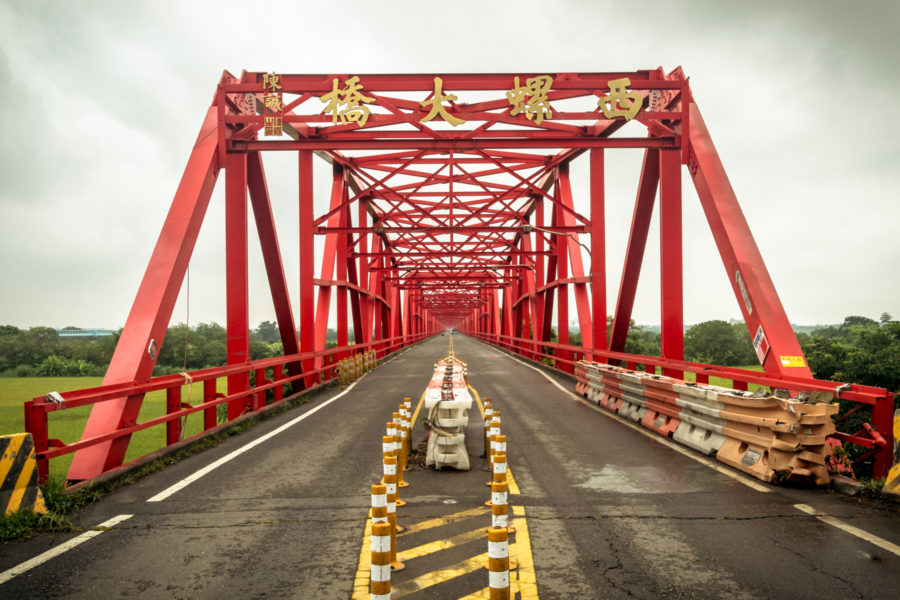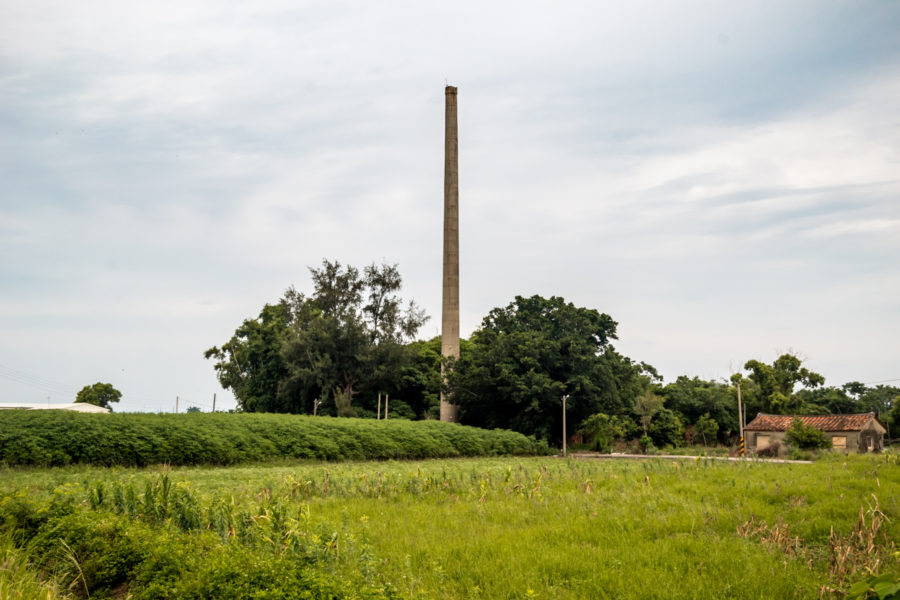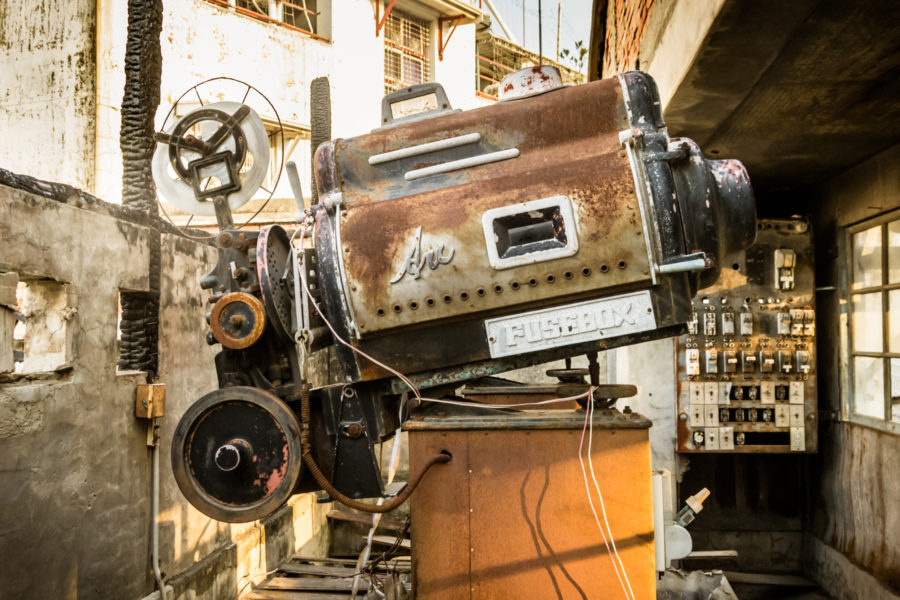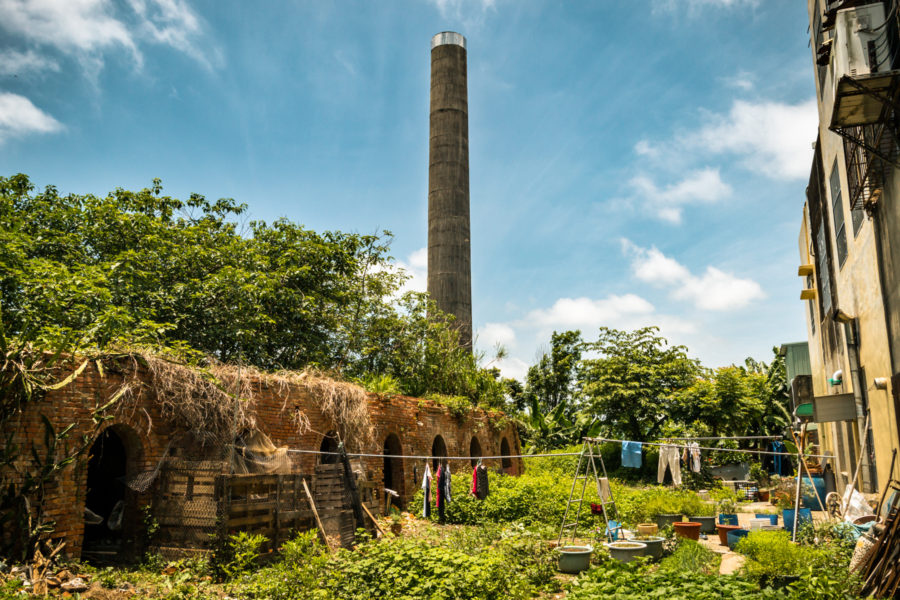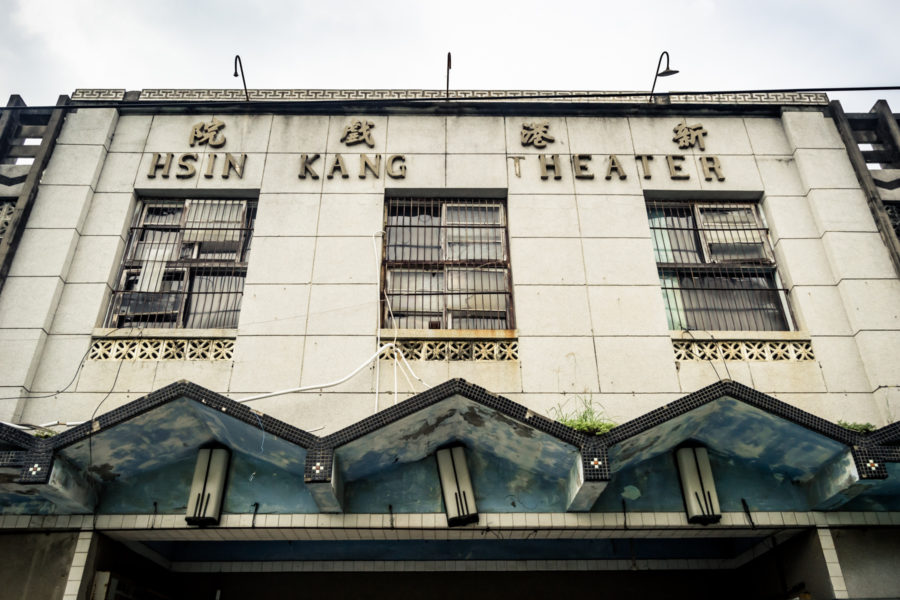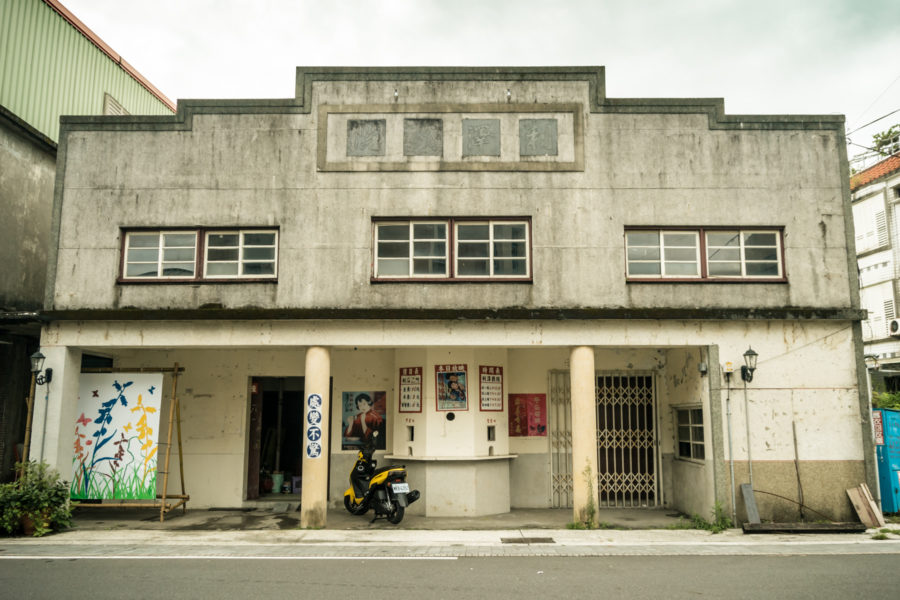Ershui is a rural township located in the southeastern corner of Changhua, bordering Yunlin and Nantou. Ershui Station 二水車站, constructed in 1935, is the primary point of transfer between the Main Line 縱貫線 of the Taiwan Railway Administration (TRA) and the Jiji Line 集集線, a tourist railway leading into the interior. Ershui, which literally means “two water”, is named after the Bābǎo Canal 八堡圳, an extensive system of artificial waterways still responsible for irrigating much of the Changhua Plain 彰化平原 three centuries after it was devised. During the Japanese colonial era this small town prospered as a center of woodworking while farmers in the countryside cultivated bananas, grapes, guava, and tobacco, among other crops. Nowadays it is mainly known as a sleepy stopover on the way to parts beyond—but a closer look will reveal several points of interest for anyone curious about Taiwanese history, architecture, and vintage style.
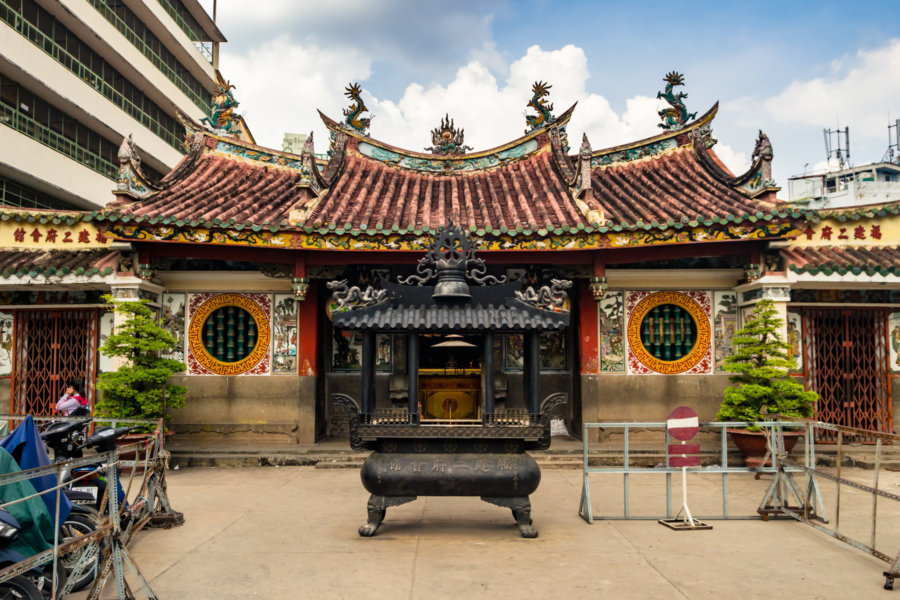
Posts with a historical angle, situating content in time and space. Here we go deeper into the past…
Hsinchu Xinyi New Village 新竹信義新村
Pictured here is a bronze bust of generalissimo Chiang Kai-shek in front of the faded emblem of the Kuomintang (KMT) in Xìnyì New Village 信義新村, a military dependents’ village in Hsinchu City. Chiang and the KMT retreated to Taiwan with more than a million Chinese soldiers and their dependents in 1949, bolstering an existing population of seven million Taiwanese. This instantly created a massive housing crisis—all those people needed places to live! The new regime attempted to address this through the development of hundreds of military dependents’ villages, gated enclaves of KMT soldiers and their families, but those were chaotic, desperate, and uncertain times, and many more ended up in informal and often illegal settlements all around Taiwan.
Postcards From Xiluo 西螺明信片
Xiluo is a small historic town on the south bank of the Zhuóshuǐ River 濁水溪 in Yunlin. It emerged as an important center of trade in central Taiwan during the Qing dynasty era and continued to prosper into the early 20th century under Japanese colonial rule. Disaster struck in 1935 when the devastating Hsinchu-Taichung Earthquake ripped through north-central Taiwan, reducing much of Xiluo to rubble. Colonial authorities and the local gentry worked together to rebuild, taking the opportunity to completely remodel the main commercial thoroughfares with an intriguing blend of influences from Baroque Revival, Art Deco, and Modernist architecture. A short stroll down Yánpíng Old Street 延平老街 reveals that many of these unique shophouses and commercial buildings remain standing today.
Beigang Theater 北港劇場
Beigang Theater (北港劇場) in Beigang, Yunlin, is among the finest and most well-preserved of Taiwan’s remaining Japanese colonial era theaters. Built in 1937 with investment from a local businessman by the name of Tsai Yu-Hu (蔡裕斛), this three storey theater featured a revolving stage, seating for 800 guests, and simple western-style facade with a trace of the Baroque Revival architecture popular at the time. It was not only a cinema—Taiwanese opera, glove puppet shows, musical concerts, wedding banquets, and other events were also held inside. The theater went out of business in 1988 and was converted for use as a department store and restaurant for some time thereafter. Nowadays it is apparently still in use as a pool hall and, inexplicably, a kidney dialysis center, but I saw no evidence of this when I visited in the summer of 2017.
Xiluo Bridge 西螺大橋
Xiluo Bridge (西螺大橋) spans the mighty Zhuóshuǐ River (濁水溪), the unofficial boundary between north and south Taiwan, connecting the counties of Changhua and Yunlin. Construction began in 1937 under Japanese colonial rule but came to a halt after the attack on Pearl Harbor as the allotted steel was needed for the war effort. In 1952 the bridge was completed under the incoming Chinese Nationalist government with American steel and financial aid. At 1,939 meters in length it was one of the longest bridges in the world when it was finished—second only to the Golden Gate Bridge at that time—and became such a source of national pride that it appeared on Taiwanese bank notes (specifically 第一套橫式新臺幣) and stamps in the 1960s. Originally it was equipped with sugar railway tracks but these have been removed and nowadays only light road traffic is permitted to cross the bridge.
Shuangxikou Brick Kiln 雙溪口磚窯
Recently I wrote about the Liùjiǎo Brick Kiln 六腳磚窯, an obscure abandonment in rural Chiayi, Taiwan. While attempting to find out more about that kiln I found a reference to a second abandoned kiln in the area, the Shuāngxīkǒu Brick Kiln 雙溪口磚窯, informally named after the closest village in neighboring Puzi. Weeks after visiting the first kiln I returned to scope out the second and—insofar as I can tell—only other remaining brick kiln in this expanse of the Chianan Plain 嘉南平原. It was a hazy, grey day out there so these photos aren’t nearly as nice as those of the other kiln, but in the interest of adding a little something to the historic record I’m sharing them here anyway.
Xinying Chenggong Theater 新營成功戲院
Despite its relative obscurity Xinying is the largest settlement along the railway line between metropolitan Tainan City and Chiayi City. It was the capital of Tainan County prior to amalgamation in 2010 and remains the secondary administrative seat of Tainan. Located on the broad and fertile Chianan Plain, it was also an important transportation hub for the sugar industry, and what remains of the Japanese colonial era sugar factory can still be found on the south side of town. Xinying was also home to half a dozen standalone movie theaters in its heyday, but most have since been demolished. I was fortunate to visit the ruined KMT authoritarian era cinema Chénggōng Theater (成功戲院) in 2017, not long before it was completely destroyed.
Liujiao Brick Kiln 六腳磚窯
Liùjiǎo Brick Kiln 六腳磚窯 was an unexpected discovery while riding from Beigang to Puzi earlier this summer. The chimney is plainly visible from the roadside and the crumbling bulk of the kiln can be discerned in a gap between the row of houses out front. Stopping to take a closer look I went around (and through) the old kiln to document what remains. Liujiao is a rather obscure part of rural Chiayi so I’ve not found any mention of this place online apart from this brief post. Whereas several kilns in various other parts of Taiwan are being preserved this obscure ruin is almost certainly never going to be the object of a conservation effort.
Hsin Kang Theater 新港戲院
Hsin Kang Theater 新港戲院 is located in the small town of Xingang, Chiayi, not far from the famous Fèngtiān Temple 奉天宮. Multiple sources agree it went out of business in 1988—a victim of shifting consumer preferences and demographic changes in small town Taiwan—but the actual age of the building is somewhat uncertain. This academic reference suggests it was founded in 1929, in the midst of the Japanese colonial era, but the theater was almost certainly renovated or completely rebuilt in the post-war period.
Lize Theater 利澤戲院
The obscure Lìzé Theater 利澤戲院 is located in the village of Lìzéjiǎn 利澤簡 in Wujie, a rural township just east of Luodong in Yilan, Taiwan. Built in 1964, it once served as a cinema and playhouse, hosting a variety of films and live theater performances for the local populace before slipping into decline in the 1980s, a little earlier than most other theaters I’ve visited around the nation. Afterwards the theater was converted for use as a clothing factory but this also went out of business. Nowadays the building is more disused than abandoned, as descendants of the original owner are still making use of the structure for storage and other purposes. In a stroke of good luck I happened to visit while the door was open—and after communicating my interest in the history of old theaters in Taiwan I was invited in for a brief chat and look around. Each theater has its own story to tell—but in this case I was particularly interested in learning why a theater was built in such a small and seemingly unimportant village.
